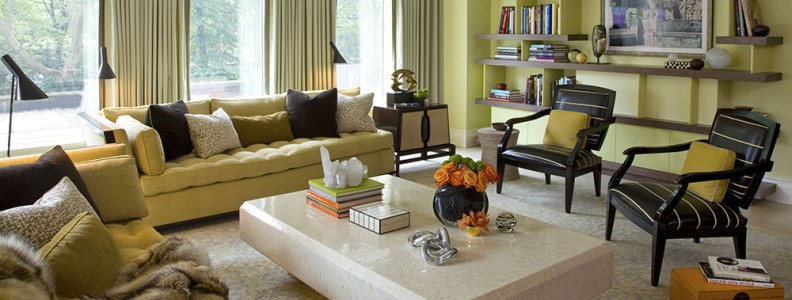Interior Design Fee Structure and Client Expectations
Have you ever looked at a piece of fine art in a museum and thought, “I could have done that!”? Whenever I say this a wise friend replies, “But you didn’t!”
Just because something looks simple or obvious doesn’t mean it came about that way. While a finished piece or artwork might seem effortless an unremarkable, the effort going into making it is what counts. The challenge is to see and credit the long journey from inception to the finished design, especially when the results are immediately satisfying.
Anyone can buy retail, but not everyone will achieve your results
You may hear someone walk into a comfortable space and say, “I could have designed this.” It’s a tempting conclusion, especially if the furniture and accents come from familiar sources such as Pottery Barn or Ikea. Yet, the same response applies: “But you didn’t!”
Often, the very best in design or architecture looks effortless, simple, and maybe even obvious. But it’s not safe to assume that just because a space feels instantly comfortable, or uses simple furniture and elements that are readily available to the public, that anyone can achieve the same results. Without knowing the client’s background, the designer, the direction for the project or the budget, it is presumptuous to assume that little creative effort produced something easy to enjoy and appreciate.
New ways of working can change the client’s perception of value
For decades, the design industry had drawn much allure from access to sources that are exclusive to design professionals. There are still many stores, vendors, workshops and studios that are open – exclusively or nearly so – to qualified design professionals. One major reason is practicality: it’s much easier to produce custom work successfully when the requirements are clear and properly articulated by creative professionals who understand what they are asking for, how to ask, and who can envision the outcome.
This creative mode differs sharply from working with retail products. With retail sources, designers must use pre-made products at hand. What the client sees is what the client gets. This mode is completely different from one where sources are built to order, which requires time and vision be created, defined, crafted and received to realize the desired effect.
Reasons such as time-sensitivity, cost control, and a desire to remove uncertainty are driving more design professionals and clients to rely on retail sources for design projects.
Here is the challenge for today’s designers. Just because consumers can buy the same items from a store doesn’t mean that they can select or combine them as a designer would, or should pay the same for them when they’re part of a solution achieved by a professional designer.
Delivering instantly satisfying results is neither easy nor obvious, though it may seem that way.
Whether a space is designed entirely from retail sources, or retail and custom sources combined, achieving instantly satisfying results is neither easy nor obvious, though it may seem that way.
This applies to setting professional design fees and pricing. It is entirely reasonable for a design professional to charge for services based on cost of retail products, plus a markup. The fee can be based on a percentage of the entire project, time and materials, or cost plus merchandise. Another reasonable option is to use a markup based from the net cost. For example, if a product from Williams-Sonoma is priced at $1,000, with a 10% discount to the designer, then a markup of 35% reasonably covers the designer’s services. It doesn’t matter that the designer’s fee may appear to be $1,215 for an item that consumers can purchase for $1,000 – they didn’t. The $215 compensates the designer for professional creative talent, item selection, placement and any other services agreed upon with the client.
Remember to have everything agreed upon in advance with your client, as a design professional. The customer’s job is to give direction feedback and provide payment for services. Your agreement allows you as the designer to enjoy the creative process and delivering the end result. Period.
A version of this article appeared in the Epoch Times, in a series of regular columns by Lloyd Princeton.
Find out how to realize more value from your contracts, or reposition your services for clients you want to attract. See:

